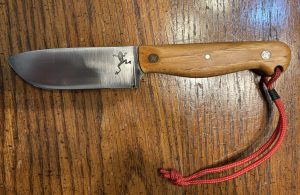
PLAYING IT SAFE!

Steel River, Ontario. Wrapped Mad River Explorer Kevlar canoe.
Yes! It survived the wrap and was later repaired to functional (not cosmetic) perfection.
My dad was a quality control engineer. A sign in his office read, “Accidents don’t just happen; they are caused!” The villains are speed (doing a task too fast), inattention and not following safety rules.
In 35 years of guiding canoe trips on some of the toughest rivers in North America, I’ve never needed more than band-aids and Tylenol. I believe I owe my good luck to a plan that emphasizes avoiding accidents.
APPROPRIATE CLOTHING
Everyone gets a detailed equipment list they must follow. There’s a full field inspection. Not allowed are plastic rain suits, cotton socks and blue jeans. Wool, fleece, polyester, and nylon are the respected fabrics. Sneakers won’t substitute for boots. Everyone carries a knife, matches, compass and whistle.
Double up on essentials—stoves, first-aid supplies, maps. Tents should have interior plastic groundcloths, and extra cords and stakes for storm-rigging. Bring at least one rain tarp—preferably one that has bug-netting all around. Where cell phones don’t work, rent a satellite phone or bring a satellite communication device (inReach, SPOT).
DOWNPLAY YOUR SKILLS
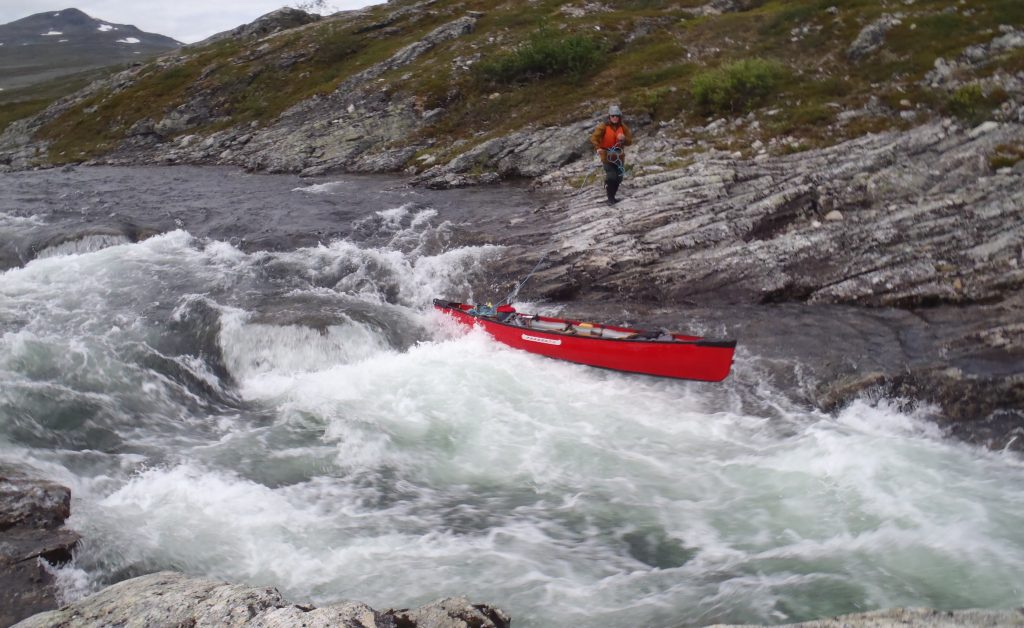
Canoe is a 14 foot folding “Packboat” rigged for solo paddling.
Underestimating your skills – and those of your crew – keeps you humble and out of trouble! For example: many people say I’m an expert canoeist; I consider myself “intermediate.” I follow the “nine out of 10” rule, which is: could you canoe this rapid nine out of ten times without capsizing? If not, line or portage around!
WAIT FOR GOOD WEATHER
The book, Into Thin Air reveals the high price you may pay if you continue when you should stay put. Better to hunker down until the weather improves, even if the wait plays havoc with your schedule. Experienced wilderness travelers plan “one down day” in five for the unexpected. If you want to travel slowly and “take in the country,” one day down in three (layover day, hooray!) is a good plan.

SLOW DOWN AND SMELL THE PINES
Most accidents occur late in the day when people are pushed and tired, or when the pace is too fast. Solution? Slow down and camp early if you can; fuel up on high energy snacks and take frequent breaks if you can’t.
I once canoed 16 hours to make up lost time, but this was before there were satellite phones and satellite communicators. Today, contact is a button push away. Be aware that if you require emergency evacuation and don’t have optional “rescue insurance,” you WILL pay the bill. If air rescue is needed, the cost could be tens of thousands of dollars!

REVIEW SKILLS AND SAFETY PROCEDURES EACH DAY
Begin each day by reviewing skills and safety procedures.
Is everyone dressed appropriately? Are there blisters or small cuts that will become infected? Are water bottles topped off, rain gear and warm clothes handy? Is everything in your boat waterproof and secured? Boaters may check the fit of PFD’S, review paddle strokes and river safety signals.
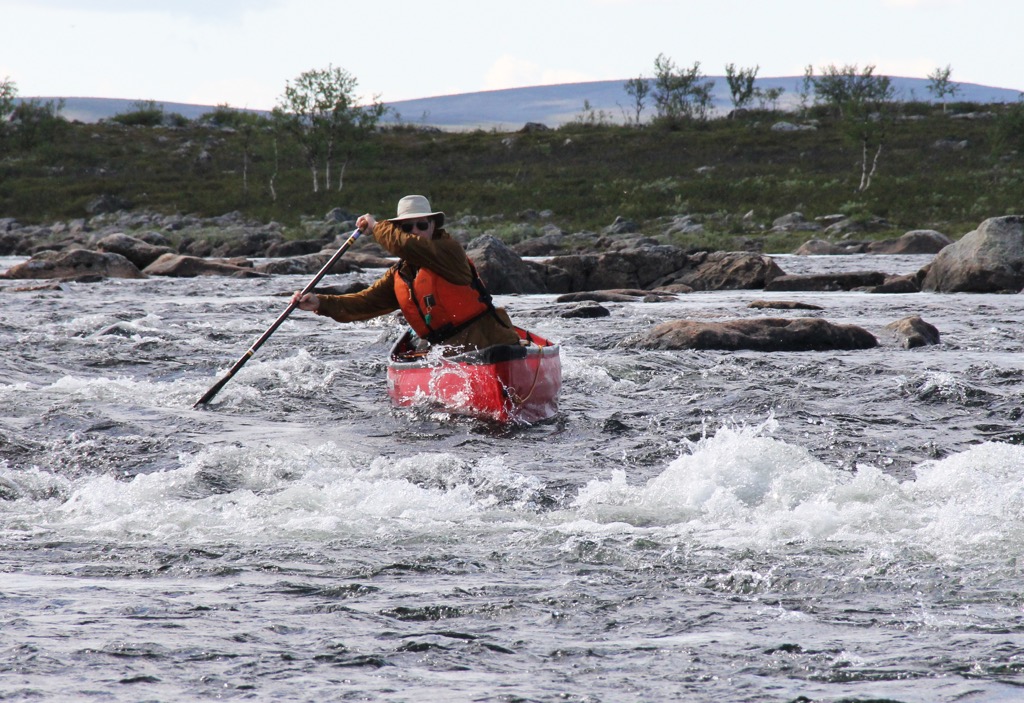
Cliff, 14-foot Pakboat, Latseino River, Norway
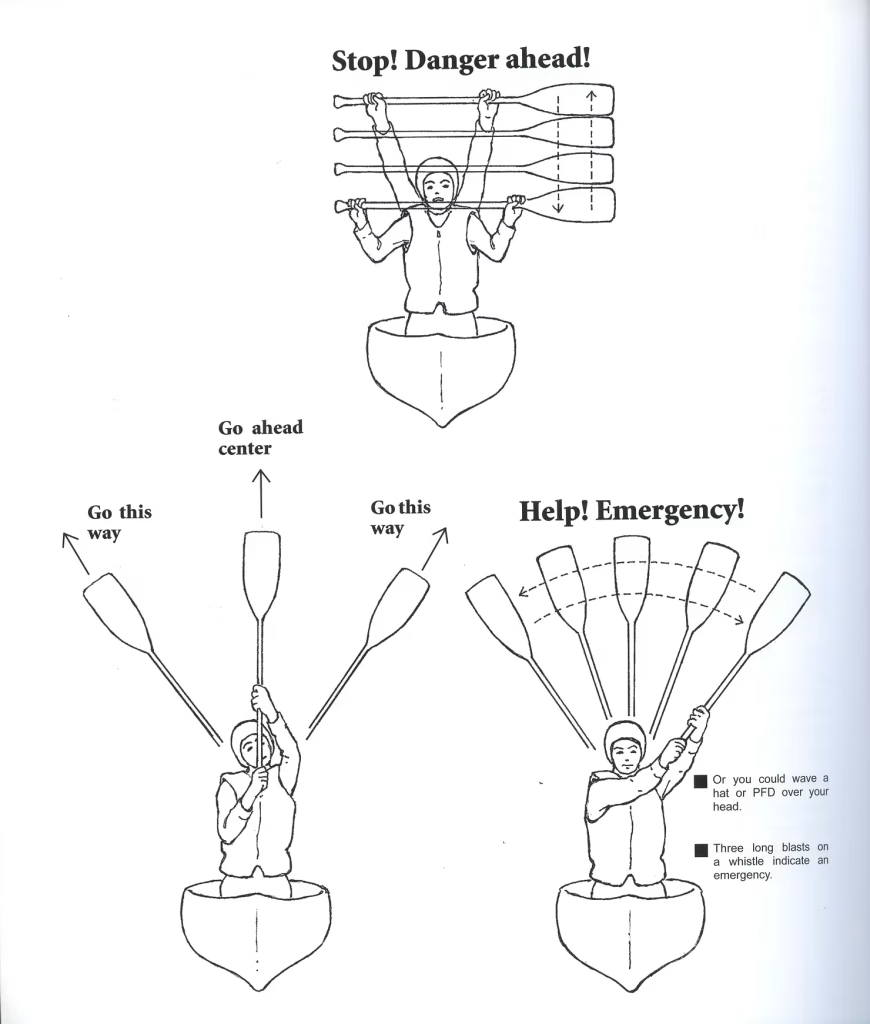
RESPECT THE VICTIMS OF AN ACCIDENT
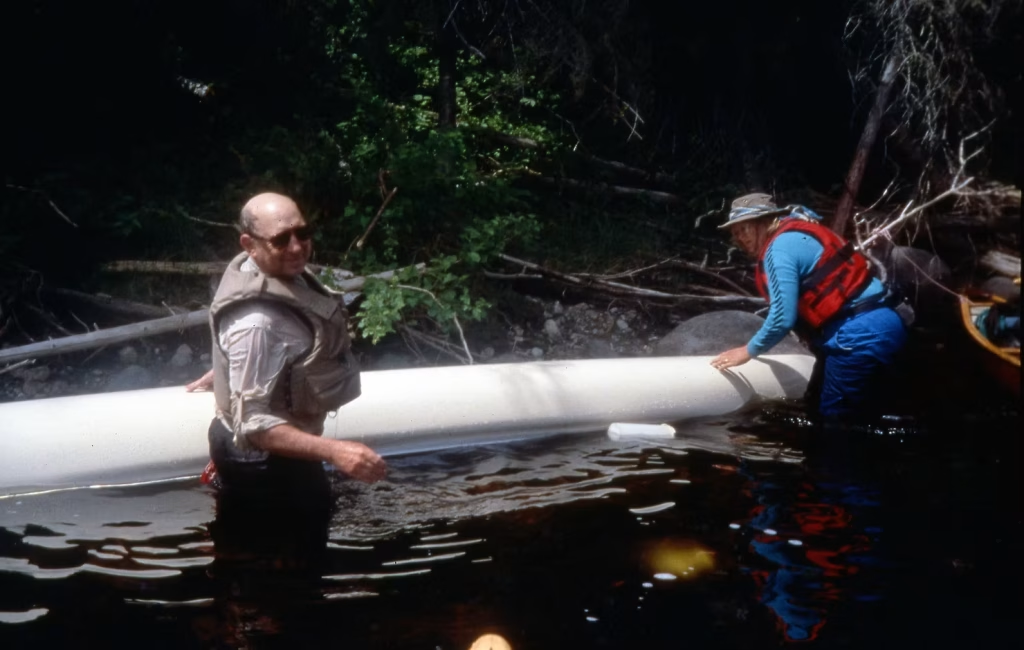
Victims of an accident may appear confident initially, but inwardly they are embarrassed and gun shy. A sensitive response is important.
For example, victims of a canoe capsize should change clothes immediately, even if the weather is warm and there is no danger of hypothermia. At the least, dry clothes will soften the sting of humiliation. Later, in camp when everyone has rested, you can analyze the capsize. Afterwards, the incident is best not mentioned again.
SAFETY RULES REDUCE ACCIDENTS
Here, along with rationale, are some of mine:
- Swimming in wilderness waters: Wear shoes (eliminates stone-bruised feet). No diving! (Head impacts are often fatal).
- Don’t wear shorts while hiking or canoeing (sunburn issues).
- Never carry a second pack on your chest (falls follow if you can’t see your feet).
- No whittling! (The cause of most cuts).
- Stow all personal gear inside your tent at night (wind carries things away; clothes get wet from dew and rain).
- Don’t sit on your life jacket (eliminates compression damage, encourages respect for your PFD).
LITTLE THINGS
Is everyone dressed for the weather and is the gear packed so it will stay dry in rain or a boat capsize? Can everyone pinpoint their position on the map? Are warm clothes, raingear, water, toilet paper, sunscreen, Band-Aids and bug dope handy? Do you have some colored plastic flagging (available at hardware stores) to mark confusing trails?
Attention to little things discourages big problems!
———————————————-
My flagship book, CANOEING WILD RIVERS, 5th Edition, contains a wealth of advice on how to safely canoe difficult rivers.
My book CAMPING’S TOP SECRETS, 5th Edition, details practical camping tips and procedures that only the experts know. If you know just a few of these tricks you’ll be a hero to your friends!
My teen book, JUSTIN CODY’S RACE TO SURVIVAL! mixes a fictional wilderness survival tale with practical outdoor tips everyone should know–a first for books of this type. Adults love it too! Now available as an audio book!
My 90-minute video, THE FORGOTTEN SKILLS details the most important camping skills. If you can do them all you’ll be a hero to your friends! Really!

